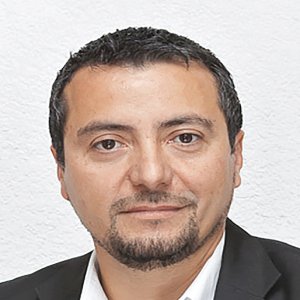Big Expectations, Big Plans

STORY INLINE POST
Q: In what ways has FEMIA contributed to growth in the aerospace sector?
A: FEMIA is actively demonstrating how competitive the aerospace industry is in Mexico. Four years ago, an independent firm investigated events up to 20 years prior to 2012 and concluded that Mexico was the world’s number one destination for aerospace manufacturing investment. We would have liked to share this information more widely but we are even more proud that the country now is blossoming in engineering and design activities.
Mexico is not a low-cost country. OEMs are identifying us as a “best cost” country. Flattering characteristics cited are productivity, learning capacity and the disposition of our human capital. Our enviable location in the NAFTA region also positions us next to the most important market on the globe and allows local industry to operate in US dollars.
We focus on the needs of our members while promoting foreign direct investment in Mexico and sharing the success stories of companies from our sector. Foreign members have stated that their Mexican projects have grown much faster than estimated, spurring faster- than-expected investment to take advantage of such a competitive and productive environment.
Q: To what extent has Pro-Aéreo’s success led FEMIA to update its expectations for the industry?
A: We are on track with Pro-Aéreo’s targets but we still have important areas of opportunity on which to focus to surpass expectations, including special processes, coatings, heat treatments, a qualified labor force and supplying special alloys. We look forward to the integration of local suppliers to comply with rapidly increasing demand.
We work closely with the federal government through ProMéxico, the National Productivity Committee (CNP) and the Minister of the Economy to invite and attract investment, building on the success we have seen in the past 12 years. We will continue to achieve solid success in the aerospace industry by taking advantage of Mexico’s advanced manufacturing capabilities.
Q: Which specialties do you perceive in each aero cluster and how are you uniting the different regions?
A: FEMIA’s focus is national. Our goal is to create a world class manufacturing hub that includes collaboration between different states. Each cluster has its own strength and all are enjoying tremendous double-digit growth. Our average growth in the past 12 years has been 16 percent per year thanks to the country’s competitiveness and collaboration among the clusters.
While it is natural to compete and be proud of each region’s successes, achievements and resources, we decided to integrate an internal promotion commission within FEMIA. This team is made up of members from across the country who are presenting a united and coordinated front. Our focus is on finding common ground to operate as one team. Mexico is more likely to expand its population’s capabilities and attract investment through collaboration than competition.
Q: What main areas should the aero clusters address to consolidate?
A: The clusters always need regular communication between the presidents and cluster participants to take advantage of their specialties. Some clusters are member financed and others are government funded, which causes each cluster to act differently. FEMIA’s goal is to support clusters in whichever way they choose to operate and we have seen them opening up to connecting with other clusters as well as with foreign companies. There is no one single recipe for success, although we have identified that the maturity and integration of a cluster contributes to its accomplishments. The clusters that are most integrated in terms of number of companies are the ones that can attract big projects. When an important aerospace company builds a manufacturing site, that company’s suppliers follow it to the cluster or it develops local suppliers. It also is important for a cluster to create strong links between the industry and local academia.
An important percentage of the most popular jet engine in history is being built in Queretaro. The new LEAP engine is making a statement in the industry with over 11,000 units already sold before its production is even normalized. Having thousands of planes using engines heavily manufactured in Mexico makes us very proud.
Q: In what way do you expect emerging hubs, such as Jalisco and Tamaulipas, to complement the industry?
A: As a country, we have ample experience and expertise in advanced manufacturing. Emerging aerospace hubs are being built on existing infrastructure and capabilities, with companies that have been operating in Mexico for years. This makes it much easier to obtain certifications that are quality-control oriented and explains why aerospace companies are flourishing in several states in Mexico. Oaxaca, Guanajuato, Yucatan and Zacatecas are destinations for qualified advanced manufacturing. Some companies are even taking advantage of the privacy of these locations as well as their proximity to the US to build classified sections in their facilities. These hubs are likely to remain small unless an OEM establishes facilities nearby or their educational institutions focus heavily on aerospace training in those particular areas.
Q: Does FEMIA believe Mexico has the ability to expand its military aircraft production?
A: In the last few years, Mexico has signed international treaties, one of which is critical to the defense and military sector because of its export controls focus, the Wassenaar Arrangement. Now that we are members of that treaty, more opportunities will open up. Having access to the technology that is being used to make defense components will strengthen our aerospace manufacturing as a whole and provide the possibility of increasing our production for exports.
Our defense activities are moving forward, though not as swiftly as those of civil or commercial aviation. The country’s manufacturing activities for space and satellites also are discrete but there are potential projects for astronautics in Mexico. Several companies have approached industry players and we hope to make more information public about the growth of that segment in the near future.
Q: What are FEMIA’s main short-term plans for the promotion of the industry?
A: FEMIA has a busy agenda for 2016, with presence at eight international events in critical locations for the global industry. We are anticipating the next edition of Mexico’s Aerospace Fair (FAMEX) in 2017 because it is a global platform for our sector. Mexico has shown its productivity, efficiency and competitiveness in such a way that international companies believe that having operations in our clusters is a way to gain additional competitive advantages.
Q: What are your projections for Mexico’s participation in the global market?
A: Global OEMs are forecasting around 38,000 commercial aircraft will be built by 2032, representing US$5.6 trillion in aircraft production. In light of this opportunity, FEMIA has high expectations of the ProAéreo program up to 2020 but our job is to identify the gaps in the market that may impede our participation in the production of those units. Our goal is to reach US$12 billion in exports by the end of 2020.























